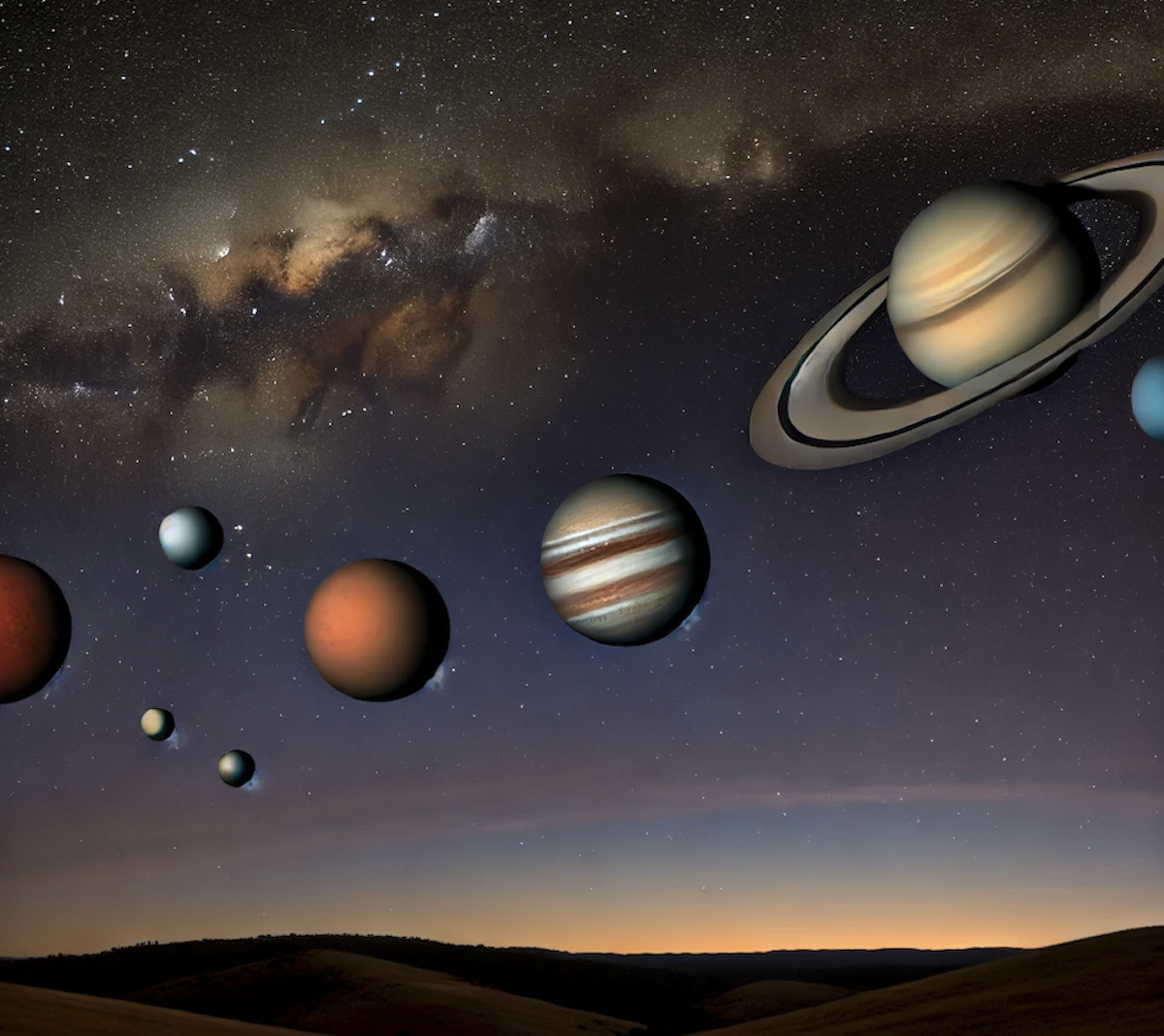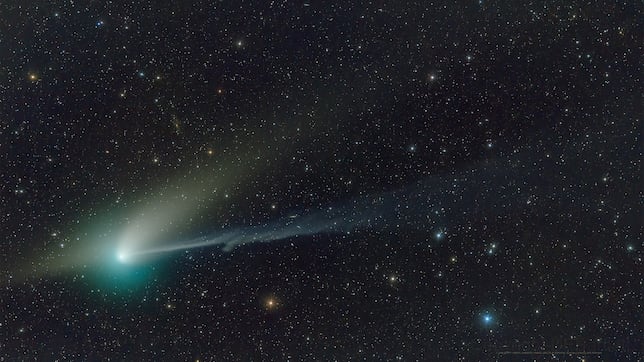Parade of the Planets 2024: the alignment of the planets | latest updates
It’s a week when Mercury, Mars, Jupiter, Uranus, Neptune, and Saturn come into close alignment in the sky.

Show key events only
Parade of the Planets 2024: latest news
Parade of the Planets 2024 LIVE
Images and footage of the planets aligning, both professional and amateur, will be added here as they become available...
The best time to witness this cosmic display will be in the early morning hours before dawn.
While the alignment will be visible almost everywhere in the morning hours, certain conditions are necessary. To get the best view, avoid areas with tall buildings or mountains that might obstruct the view of the horizon.
Dark sky locations away from city lights will provide better visibility, especially for spotting dimmer planets like Uranus and Neptune.

Parade of the Planets
How often do the planets line up for viewing from earth and when will the next alignment be?
The planetary parade actually happens much more often than you might think.
This will be the third such event in 2024, with previous ones taking place on April 20 (Venus, Mercury, Neptune, Mars and Saturn) and June 7 (Mercury, Jupiter, Uranus, Mars, Neptune and Saturn).
If you miss this week’s one, don’t fret. You won’t have to wait too much longer for the next one. On January 18, 2025, Mars, Jupiter, Uranus, Neptune, Saturn and Venus will line up for your viewing pleasure, while there will be a great planetary alignment (to our eyes at least) a little more than a month later on February 28.
Read more on the celestial event in our full coverage.
Planetary rotation
Check out this neat graphic showing how the planets (plus Ceres and Pluto) in our Solar System rotate.
When is the next planetary parade?
We actually don’t have to wait all that long for the next planetary alignment, believe it or not.
Six more planets (Mars, Jupiter, Uranus, Neptune, Saturn, and Venus this time) will be popping out to say hello on January 18, 2025, which is less than five months away.
And it’ll be a bumper start to the new year if you’re an astronomy fan, with seven planets (Saturn, Mercury, Neptune, Venus, Uranus, Jupiter, and Mars) set to be visible a little line over a month later on February 25, 2025.
Remember, that’s only one planet short of a ‘full’ / ‘great’ planetary alignment.
Where are the best places to see the planetary parade?
Unlike some previous astronomical events, you don’t necessarily have to be on one side of the country or another to be able to see it properly. The parade will be visible almost everywhere in the morning hours, although certain conditions are necessary, as you might imagine. This might seem obvious, but avoid areas with tall buildings or mountains that could obstruct the view of the horizon.
Dark sky locations away from city lights will provide better visibility, especially for spotting dimmer planets like Uranus and Neptune.
Remember that atmospheric conditions and local weather will play a significant role in visibility. Clear skies are essential for the best viewing experience.
When is the planetary parade taking place?
There’s good news and there’s bad news. Let’s start with the bad news.
Peak viewing time for the planetary parade is before sunrise (logical, really) on Wednesday, August 28, at around 5:20 a.m. ET. Obviously, that’s the middle of the night (2:20 a.m.) for west coast folks and others.
The good news, though, is that if you aren’t able to catch it at that time, the parade will still be visible for a few days after that (and already was a bit before), so there should be a reasonable chance of everyone getting to see it if they want to (depending on the weather, as ever).
A planetary alignment or a planetary parade?
Now, for the technical bit. Planetary alignment is the official astronomical term for what happens any time two planets or more line up in a row. Three planets are a ‘mini-planetary alignment’, four is considered ‘small’, while five or more is said to be ‘large’. If we are ever treated to all eight planets (plus former planet Pluto) lined up one after the other, then that’s a ‘great’ or ‘full’ planetary alignment. But a planetary parade is also a thing, and also applies to what we’re going to see this week. It’s less exact, you might say, but it’s basically when five or more planets file into a small area in the sky. That’s what’s happening this week.
Obviously, these planets are pretty far away, so they're not actually in a straight line, it will just look like it to us from where we’re standing (or sitting). A planetary parade is principally an optical illusion, which Time Magazine has described as “randomly placing six different people at six different spots in a field and positioning yourself so that you can gather them all in your camera lens at once.”
Still, if it looks good, we’ll take what we can get.
What planets will be visible in the planetary parade?
Six planets will be visible in the sky this week. And not only will they be visible, but they’ll make life easy for those of us trying to locate them by lining up alongside each other one after the other. Mercury, Mars, Jupiter, Uranus, Neptune, and Saturn are the planets in question, although we’re sure you’ll be able to tell when you see them, right? And, if you’re lucky, you might even get to see the moon too, depending on cloud coverage in your area (I know, I know, you can see that on plenty of nights already)!
Four of six said planets will be visible to the naked eye:
Jupiter: As the largest planet in our solar system, Jupiter will be one of the brightest objects in the sky, appearing as a brilliant point of light.
Saturn: Known for its stunning rings, Saturn will be visible as a bright, yellowish star-like object in the Aquarius constellation.
Mars: The Red Planet will be recognizable by its distinctive reddish hue.
Mercury: Visible in Leo but will be hard to see due to its proximity to sunrise.
If you want to catch Neptune and Uranus (no tittering in the back, please), though, then you’ll need some form of optical aid.
Uranus: This distant ice giant is too faint for most people to see without optical assistance. High-powered binoculars or a telescope will be necessary to view Uranus.
Neptune: The most distant planet in our solar system, Neptune is not visible to the naked eye. A telescope is required to observe this blue giant.
Welcome to the Parade of the Planets 2024
Hello and welcome to our live coverage of this week’s planetary parade, which reaches its peak at 5:20 a.m. ET on Wednesday, August 28, but will be visible for several days before and after.

Complete your personal details to comment